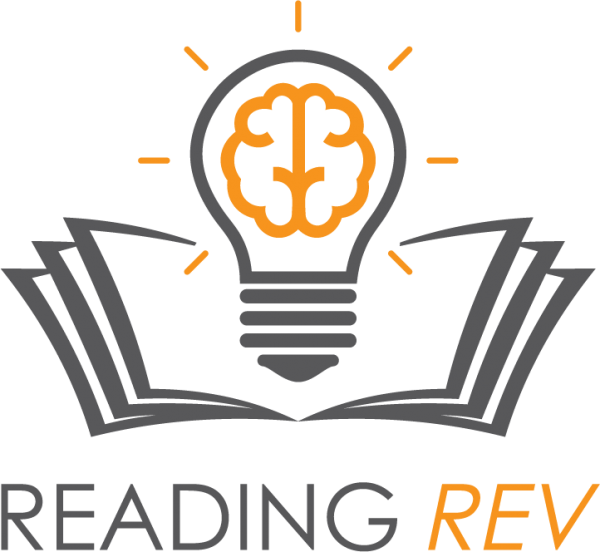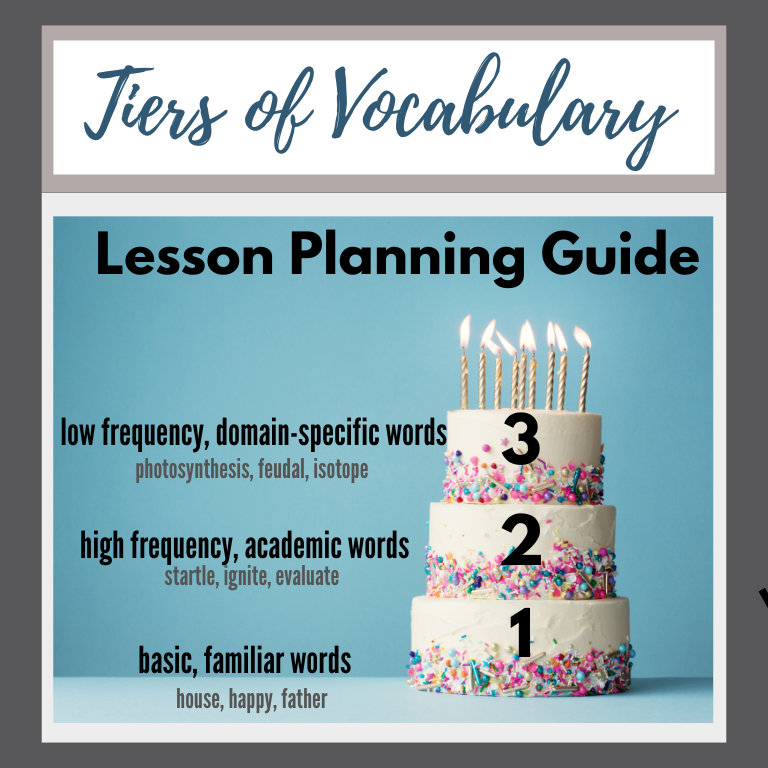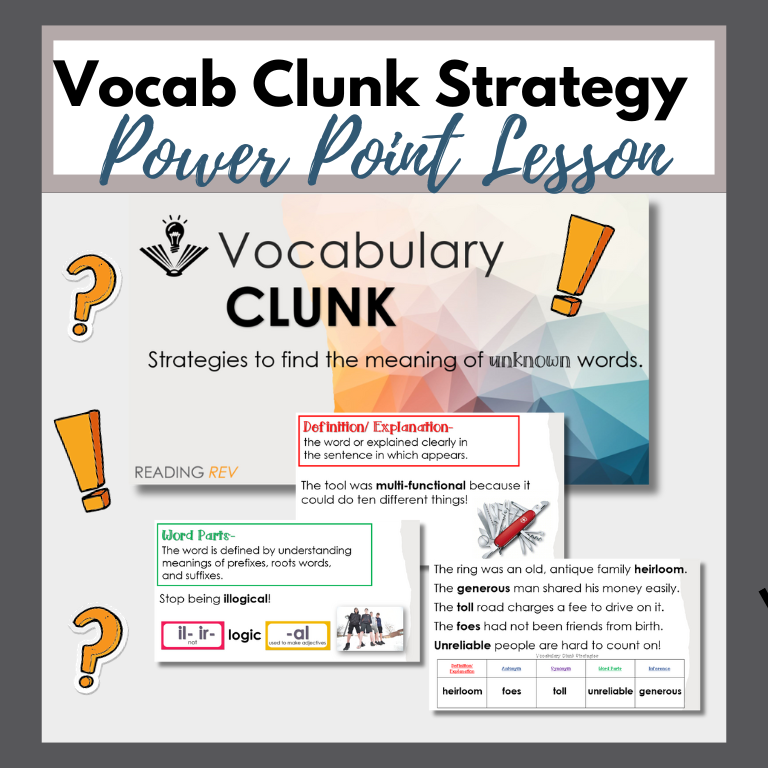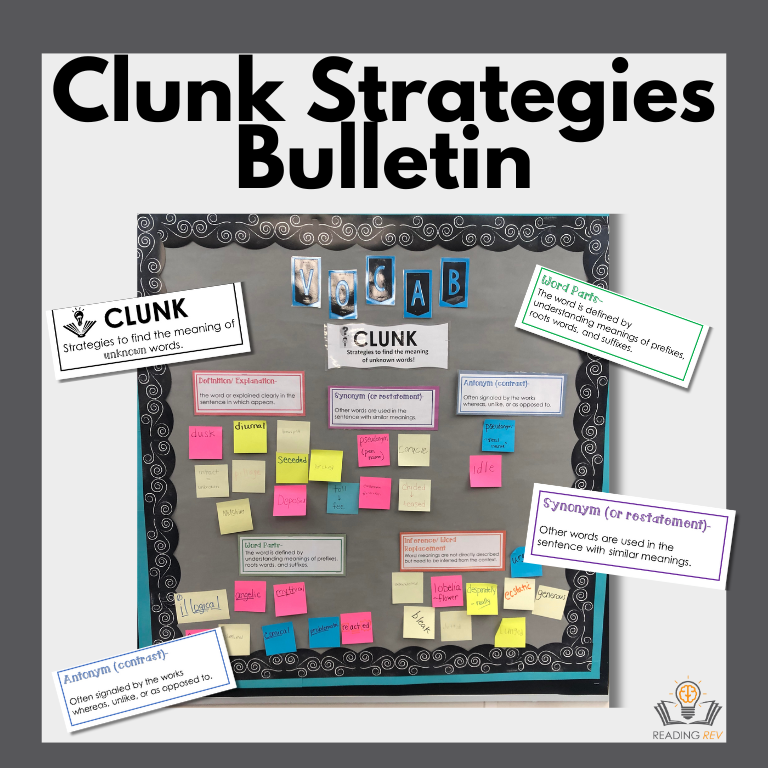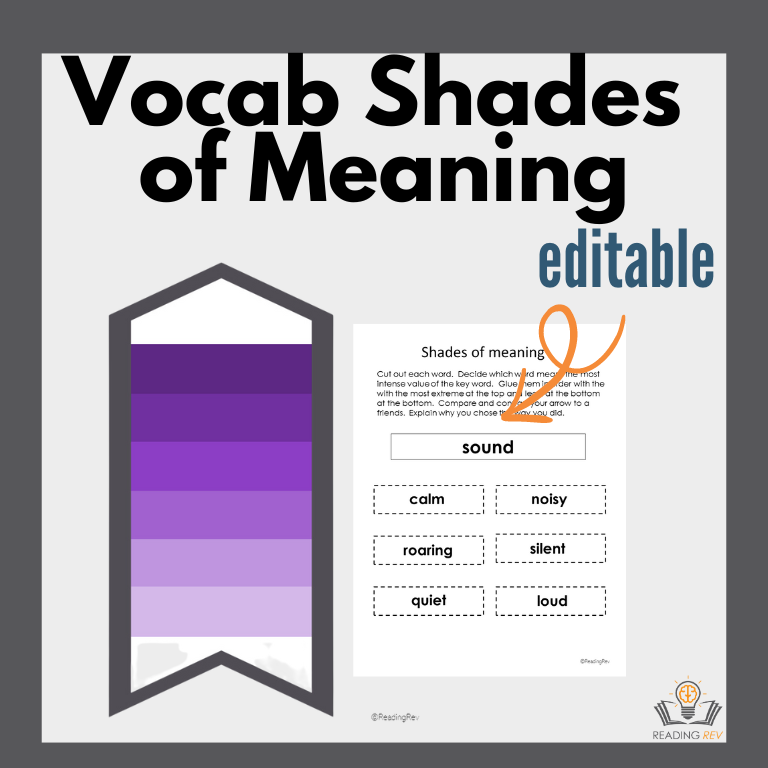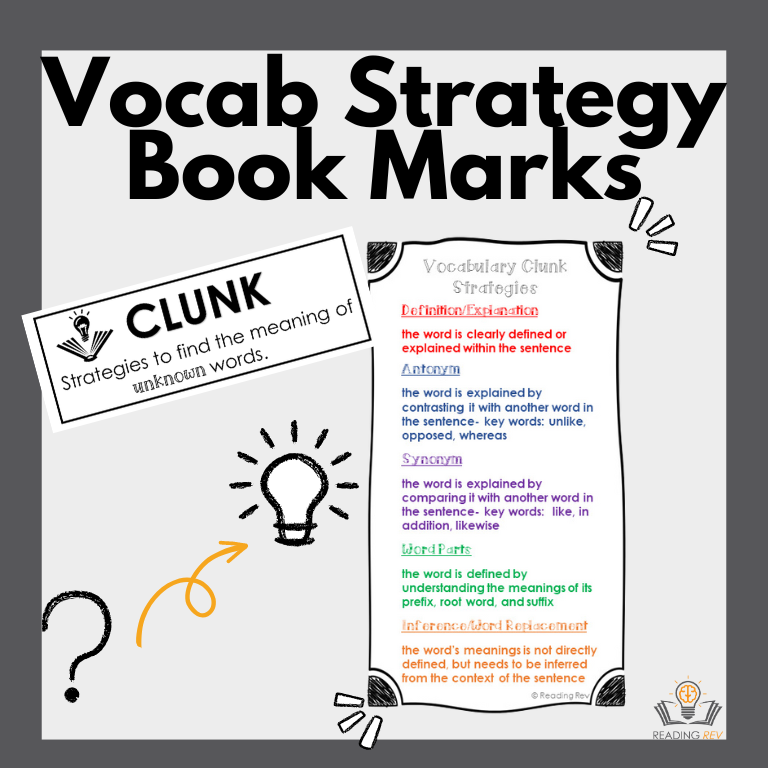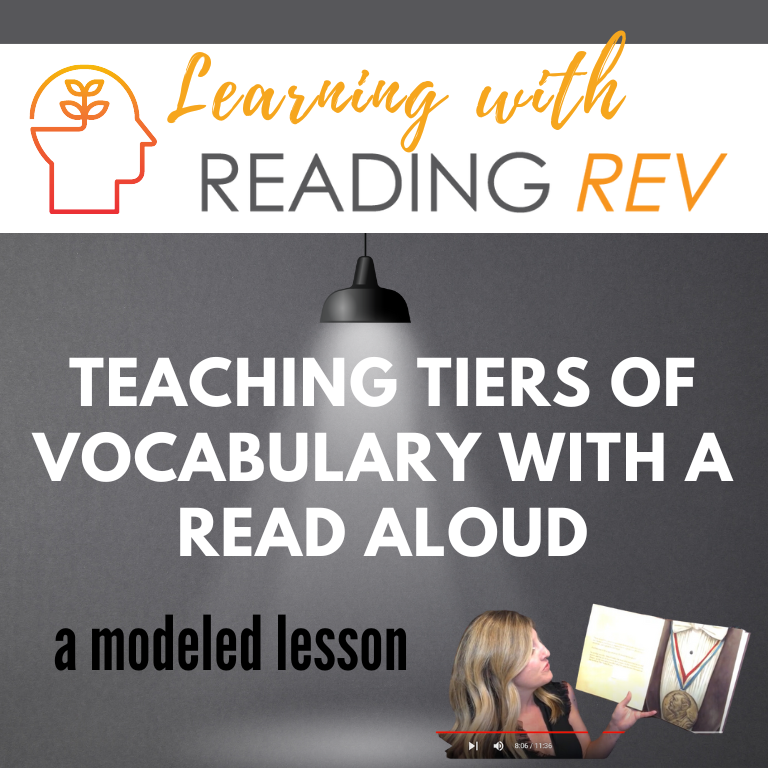Rethinking Vocabulary
Vocabulary and comprehension are so closely related that it is debatable if they should even be separate components of reading. Without attaching meaning to words, decoding and “reading” becomes pointless. Vocabulary serves as the bridge between the word-level processes of phonics and the cognitive processes of comprehension (Kamil and Hiebert 2005).
Rich language from the start…
Unfortunately, not all children enter school with the same oral vocabulary. Children with rich and varied language experiences from infancy to five years old have a great advantage. Oral vocabulary becomes a strong predictor of future reading success.
Those coming to school with limited oral vocabulary need ROBUST language instruction!
Educators agree that once in school, students learn approximately 7 words per day or 3,000 words per year. This can feel like a daunting task to a teacher! How can you possibly get students to retain 7 new words per day? Acquisition of vocabulary is complicated.
Let’s break it down into a four-part instructional framework.
Rich and varied language experiences
Teach individual words
Teach word learning strategies
Foster word consciousness
First, children need rich and varied language experiences. This is school! Students experience-rich vocabulary while listening to a read-aloud, discussing and performing a science experiment, and learning about an important historical event. Just being immersed in interactive and structured academic language builds vocabulary. Valuable vocabulary learning can take place in these incidental, point-of-contact moments.
Second, teachers need to explicitly teach words. This is what we think of when we see “vocabulary” in our lesson plan templates. However, the age-old, “look it up in the dictionary” is far from adequate. Teachers need to be intentional about what words they are selecting to give explicit, direct instruction. Optimally, 10-15 words per week should get this kind of direct, in-depth attention.
Vocabulary words have been placed in three tiers.
The first tier is common, everyday words. These are words that most students know and use in conversation. However, students who are coming from sparse language backgrounds or those who are learning English as a second language may need instruction and support with these words.
Tier 2 words are academic words that are found across content areas. These words are likely to be found in multiple subjects and texts so should be the focus of most vocabulary instruction.
Tier 3 words are domain-specific words. Because these less frequent words are seen in only one context or subject, these words are important for one subject or unit, but not transferrable.
As teachers, we have heard this for years. But how do we get from the 7-10 words per week to the 3,000 words per year? How do we fill the gaps for those students who are language deprived? The answer lies with incidental teaching and independent word-learning strategies. We as teachers need to become wizards who help kids become aware of the magic in the words around them. It is our job to inspire a deep appreciation of the unique ability humans possess to create and mold language. We need to show them ways that they can discover the meaning of these words. Once we have fostered a word consciousness, give students the tools for figuring out their meaning. Teaching word-learning strategies will enable students to more than double the number of words they learn. “Most words are learned from context, and the richest context for building vocabulary for students beyond the primary grades are books.” (Stahl and Stahl, 2004).
Teaching students to recognize words they don’t know is the first step.
Students need metacognition (thinking about thinking) lessons. They need to know that when they come to a word they don’t know, they can do something to figure it out. Collaborative Strategic Reading (CSR) teaches kids to recognize words they understand (clicks) versus words they don’t (clunks). CSR then teaches 5 Clunk Strategies to figure out the meaning of the unknown word.
Finally, students need on average 17 exposures for a new word to be solidified into long-term memory. Simply showing a word and giving its definition is not enough. Having an instructional routine in which a student receives direct, explicit can have two benefits. It frees up cognitive desk space. A student’s attention is on the new learning, not learning the new activity. And, it allows for deep processing. A student engages with the word on a higher level or in a personal way. Below is an example of a vocabulary instructional routine that we love.
Vocabulary instruction has not received the attention it deserves. A robust vocabulary can increase fluency, comprehension, succinct writing, and standardized test scores. Explicitly teaching word meanings improves students’ listening, speaking, reading, and writing.
Our Favorite Vocabulary Instructional Routine: POSSUM
1- Teacher pronounces word. Students repeat. (P-phonology)
2- Spell the word using syllables and sounds. (O-orthography)
3- Teacher gives definition, context, & part of speech; use morphology when applicable. (S-syntax, S-meaning, M, morphology)
4- Connection using the word (U- understanding)
5- Synonym and Antonym
6- Multisensory
7- Deep processing
8- Multiple exposures
Looking for more vocabulary instruction inspiration? All of these (and so much more) can be found inside Reading Rev’s VIP site! Hope to see you inside!
Comment with ways that you’ve brought vocabulary instruction to life! I’d love to hear your ideas!
One knowledgeable, compassionate teacher can change everything. Thanks for being part of our mission to revolutionize reading instruction!
~Bri
